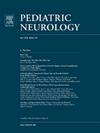Current and Emerging Precision Therapies for Developmental and Epileptic Encephalopathies
IF 3.2
3区 医学
Q2 CLINICAL NEUROLOGY
引用次数: 0
Abstract
Developmental and epileptic encephalopathies (DEEs) are severe neurological disorders characterized by childhood-onset seizures and significant developmental impairments. Seizures are often refractory to treatment with traditional antiseizure medications, which fail to address the underlying genetic and molecular mechanisms. This comprehensive review explores the evolving landscape of precision therapeutics for DEEs, focusing on mechanism-driven interventions across key pathophysiologic categories. Targeted approaches for channelopathies include antisense oligonucleotides and gene therapies, such as zorevunersen and ETX101 for SCN1A-related Dravet syndrome, alongside novel small molecules for other ion channel disorders. Advances in targeting neurotransmitter receptor dysfunctions, including γ-aminobutyric acid and glutamate receptor variants, highlight the use of modulators such as gaboxadol, radiprodil, and l-serine, alongside emerging gene therapies. For synaptic dysfunctions, innovative treatments such as chemical chaperones for STXBP1-related disorders and Ras-Raf-MEK-ERK inhibitors for SYNGAP1 pathologies are discussed. The review also examines precision interventions targeting cellular signaling pathways in tuberous sclerosis complex, epigenetic regulation in Rett syndrome, and metabolic interventions like ketogenic diets and targeted supplementation for specific genetic etiologies. Additionally, the importance of enhancing access to genetic testing, conducting robust natural history studies, and employing innovative clinical trial designs is emphasized. Future directions focus on addressing the challenges in developing and implementing gene-based therapies, integrating systems biology, leveraging artificial intelligence for data analysis, and fostering collaboration among stakeholders. The rapidly advancing field of precision therapeutics for DEEs holds promise to improve outcomes through tailored, equitable, and patient-centered care.
发育性和癫痫性脑病的当前和新兴精确疗法
发育性和癫痫性脑病是一种严重的神经系统疾病,其特征是儿童期发作和显著的发育障碍。传统的抗癫痫药物无法解决潜在的遗传和分子机制,因此癫痫发作往往难以治疗。这篇全面的综述探讨了dei精确治疗的发展前景,重点是跨关键病理生理类别的机制驱动干预。通道病变的靶向治疗方法包括反义寡核苷酸和基因治疗,如用于治疗scn1a相关的Dravet综合征的zorevunersen和ETX101,以及用于治疗其他离子通道障碍的新型小分子。针对神经递质受体功能障碍(包括γ-氨基丁酸和谷氨酸受体变异)的进展,突出了诸如加博沙多、radiprodil和l-丝氨酸等调节剂的使用,以及新兴的基因疗法。对于突触功能障碍,讨论了诸如化学伴侣治疗stxbp1相关疾病和Ras-Raf-MEK-ERK抑制剂治疗SYNGAP1病理等创新治疗方法。该综述还研究了针对结节性硬化症复合体的细胞信号通路的精确干预,Rett综合征的表观遗传调控,以及代谢干预,如生酮饮食和针对特定遗传病因的靶向补充。此外,强调了加强获得基因检测、开展健全的自然历史研究和采用创新临床试验设计的重要性。未来的方向集中在解决开发和实施基于基因的疗法的挑战,整合系统生物学,利用人工智能进行数据分析,以及促进利益相关者之间的合作。快速发展的硕士学位精准治疗领域有望通过量身定制、公平和以患者为中心的护理来改善结果。
本文章由计算机程序翻译,如有差异,请以英文原文为准。
求助全文
约1分钟内获得全文
求助全文
来源期刊

Pediatric neurology
医学-临床神经学
CiteScore
4.80
自引率
2.60%
发文量
176
审稿时长
78 days
期刊介绍:
Pediatric Neurology publishes timely peer-reviewed clinical and research articles covering all aspects of the developing nervous system.
Pediatric Neurology features up-to-the-minute publication of the latest advances in the diagnosis, management, and treatment of pediatric neurologic disorders. The journal''s editor, E. Steve Roach, in conjunction with the team of Associate Editors, heads an internationally recognized editorial board, ensuring the most authoritative and extensive coverage of the field. Among the topics covered are: epilepsy, mitochondrial diseases, congenital malformations, chromosomopathies, peripheral neuropathies, perinatal and childhood stroke, cerebral palsy, as well as other diseases affecting the developing nervous system.
 求助内容:
求助内容: 应助结果提醒方式:
应助结果提醒方式:


